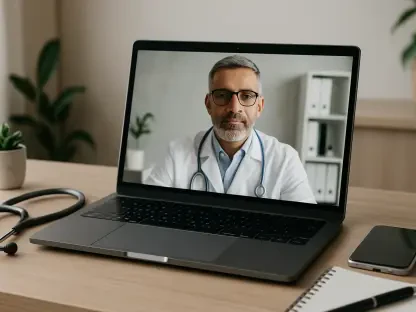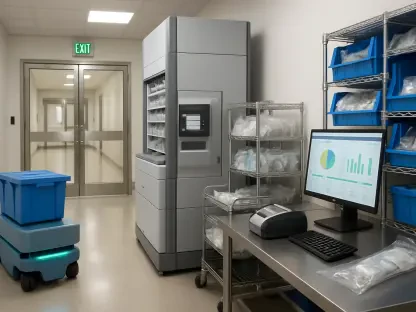In an effort to address long-standing healthcare accessibility challenges and build upon recent advancements, U.S. Senator Peter Welch (D-Vt.) has introduced bipartisan, bicameral legislation aimed at expanding Medicaid coverage for telehealth services. The bill, known as the Creating Opportunities Now for Necessary and Effective Care Technologies (CONNECT) for Health Act, seeks to leverage the proven benefits of telehealth observed during the COVID-19 pandemic. The legislation has drawn attention for its potential to significantly enhance healthcare delivery, particularly in rural and underserved areas where traditional healthcare access is often hindered by logistical challenges such as transportation issues, adverse weather conditions, and geographical isolation.
The recent event held by Senator Welch at the Thayer House in Burlington, Vermont, served as a platform to discuss this critical legislation. Thayer House, an affordable living community for Vermonters aged 55 and older, plays a key role in supporting resident health through the SASH (Support and Services at Home) program. SASH is a statewide initiative that aids Medicare beneficiaries in over 140 living communities, offering a fitting backdrop for highlighting the benefits of telehealth services. The event emphasized the necessity of making COVID-19 telehealth flexibilities permanent to maintain improved health outcomes and ease patient-doctor connections, with these flexibilities set to expire this year.
The Importance of Telehealth for Rural and Underserved Areas
Telehealth services have emerged as a critical component of healthcare, especially in rural regions where accessing healthcare providers can be a formidable challenge. Anne Morris, MD, highlighted the barriers that telehealth helps overcome in these areas, such as transportation shortages and weather-related impediments. By enabling remote consultations, telehealth mitigates the need for patients to travel long distances, thus ensuring timely medical attention and continuous care. Dr. Morris’s insights underscore the transformative impact of telehealth on rural healthcare delivery.
Jessilyn Dolan, a SASH Wellness Nurse, further illustrated telehealth’s convenience and efficacy in managing patient health. By facilitating virtual consultations, telehealth empowers healthcare providers to monitor medical plans and provide support without the logistical hurdles that often accompany in-person visits. This approach not only enhances patient understanding of their medical conditions but also fosters a more responsive healthcare system. Dolan’s experience with telehealth showcases its potential to revolutionize care delivery, particularly for older adults and those with limited mobility.
Helen Mischik, a resident of the Thayer House, shared her personal experience with telehealth, emphasizing its accessibility and ease of use. For individuals without personal transportation, telehealth offers a lifeline to essential healthcare services. Mischik’s testimony highlights the real-world benefits of telehealth and its role in bridging the gap between healthcare providers and patients. By making telehealth services readily available, the CONNECT for Health Act has the potential to address significant disparities in healthcare access.
Legislative and Organizational Support
The momentum behind the CONNECT for Health Act is bolstered by broad bipartisan support and the backing of influential organizations. Leading the bipartisan coalition in the Senate, Senator Welch has garnered support from over 60 Senators across party lines. Parallel legislation has also been introduced in the House of Representatives, reflecting a unified commitment to advancing telehealth services. The widespread endorsement of the Act underscores a shared recognition of telehealth’s importance in modern healthcare policy.
A notable aspect of the CONNECT for Health Act is its endorsement by over 150 organizations, including prominent entities such as the American Medical Association, AARP, and the National Association of Rural Health Clinics. This broad coalition of support signifies a consensus on the necessity of integrating telehealth into regular healthcare policy to address ongoing accessibility issues. Such wide-ranging backing from both legislative and organizational bodies indicates a comprehensive effort to ensure telehealth’s place in the future of healthcare.
The support from these organizations is not only a testament to telehealth’s efficacy but also a call to action for Congress to take decisive steps in making these services permanent. The Act aims to build on the temporary telehealth flexibilities introduced during the pandemic, providing a sustainable framework for future healthcare delivery. By aligning legislative efforts with organizational advocacy, the CONNECT for Health Act represents a concerted push towards a more inclusive and accessible healthcare system.
A Call for Continued Efforts
In a bid to tackle ongoing healthcare access issues and build on recent progress, U.S. Senator Peter Welch (D-Vt.) has unveiled bipartisan, bicameral legislation aimed at expanding Medicaid coverage for telehealth services. Named the Creating Opportunities Now for Necessary and Effective Care Technologies (CONNECT) for Health Act, the bill aims to capitalize on telehealth’s proven advantages observed during the COVID-19 pandemic. This legislation is notable for its potential to greatly enhance healthcare delivery, especially in rural and underserved regions where conventional healthcare access faces significant barriers such as transportation difficulties, extreme weather, and remote locations.
Senator Welch hosted a recent event at the Thayer House in Burlington, Vermont, to discuss this vital legislation. Thayer House is an affordable community for Vermonters aged 55 and older and plays a significant role in resident health through the SASH (Support and Services at Home) program. SASH is a statewide initiative assisting Medicare beneficiaries in over 140 living communities. The event highlighted the importance of making COVID-19 telehealth flexibilities permanent to sustain improved health outcomes and simplify patient-doctor connections, as these flexibilities are set to expire this year.









